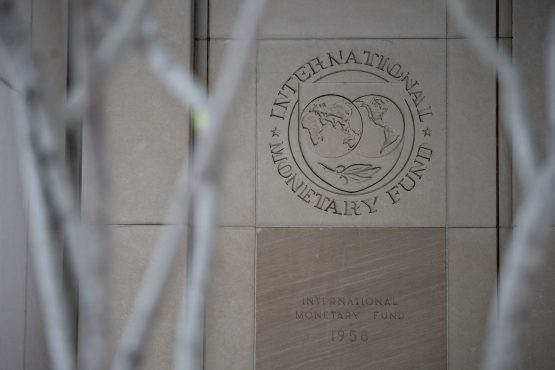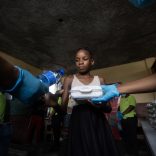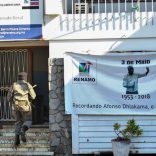DHL plans to invest €300m to expand logistics in Africa
CPLP: IMF sees growth in all Portuguese-language economies in Africa in 2021

The International Monetary Fund on Thursday predicted in a report on sub-Saharan Africa that the economies of all members of the Community of Portuguese-Language Countries (CPLP) in the region will grow as soon as 2021, after overcoming the recession that is anticipated for this year.
According to the biannual report ‘Economic Outlook for Sub-Saharan Africa’, released in Washington as part of the IMF and World Bank Annual Meetings, all of Angola, Cabo Verde, Guinea-Bissau, Equatorial Guinea, Mozambique and Sao Tome and Principe will return to positive growth, although only Angola and Cabo Verde will grow above the regional average.
The report suggests that the country whose economy will recover most rapidly from the recession caused by the pandemic is Cabo Verde, which is expected to see its economy expand by 4.5%. However, is also the one that is set to shrink the most this year, by 6.8%, as a result of lockdown measures and restrictions on travel, which have had a strong impact, given the country’s economic dependence on tourism.
With regard to public debt, whose ratio to GDP in sub-Saharan Africa almost doubled from the average between 2010 and 2016, from 32.9% to 56.6% in the latte year, Cabo Verde also stands out as one of the Portuguese-language countries where the IMF predicts an increase from this year to next.
One of the countries that most concerns analysts where the drop in revenue and increase in expenditure are concerned, bringing the issue of debt sustainability to the fore, is Equatorial Guinea, the only CPLP member whose debt-to-GDP ratio is at present below the regional average. It is expected to end 2021 with 48.2%, against a regional average of 57.8% at the end of next year.
In the report, the IMF warns that sub-Saharan Africa is dealing with an unprecedented economic and health crisis, which in just a few months has jeopardised the development gains of recent years and disrupted the lives and incomes of millions of people. Its base projection assumes that in most countries, some social-distancing measures will remain in place in 2021 before fading away from the end of 2022 as vaccine coverage expands and therapies improve.
The resurgence of new cases in many advanced economies and the spectre of cyclical outbreaks in sub-Saharan Africa point to the pandemic being likely to remain a very serious concern for some time, the report suggests, even as the reopening of economies contributes to signs of growth in the second half of 2020, as commodity prices rise slightly and financial conditions improve.
Nevertheless, for the year as a whole, the IMF forecasts GDP in the region to shrink by 3.0%, noting that economies most dependent on tourism, such as Cabo Verde, and countries that export mainly raw materials, such as Angola or Equatorial Guinea, have been the most affected.
“For 2021 we predict growth of 3.1%, which is less than the expected expansion in the rest of the world, partly reflecting the little scope for fiscal manoeuvre that countries have to sustain an expansionist policy,” the IMF states, adding that this is why international support is fundamental.
Countries will, it warns, “have to make difficult choices” but the potential for growth remains unchanged: “The need for structural reforms that promote resilience is more urgent than ever, particularly in the areas of revenue mobilisation, digitalisation, trade integration, competition, transparency and governance, and climate change mitigation.”
Globally, the IMF forecasts negative economic growth of -4.4% this year and growth of 5.2% in 2021.
Economic growth 2020. 2021
Angola 4.0. 3.2
Cabo Verde -6.8. 4,5
Guinea-Bissau -2.9 3.0
Equatorial Guinea . -6.0 2.2
Mozambique. -0.5 2.1
Sao Tome and Principe. -6.5 3.0
Sub-Saharan Africa. -3.0. 3.1
Inflation. 2020 2021
Angola 21.0 20.6
Cabo Verde. 1.0. 1,2
Guinea-Bissau 2.0. 2.0
Equatorial Guinea…… 3.0…… 2.2
Mozambique………… 3.6…… 5.6
Sao Tome and Principe…7.9…… 8.0
Sub-Saharan Africa…. 10.6….. 7.9
Public debt……… 2020….. 2021
Angola……………. 120.3…. 107.5
Cabo Verde………… 136.8…. 137,6
Guinea-Bissau……….. 79.8….. 79.0
Equatorial Guinea……. 51.2….. 48.2
Mozambique………… 121.3…. 123.5
Sao Tome and Principe…. 73.6….. 66.7
Sub-Saharan Africa….. 56.6….. 57.8
- Read the full IMF Regional Economic lokk for Sub Saharan Africa “A Difficult Road to recovery” HERE












Leave a Reply
Be the First to Comment!
You must be logged in to post a comment.
You must be logged in to post a comment.